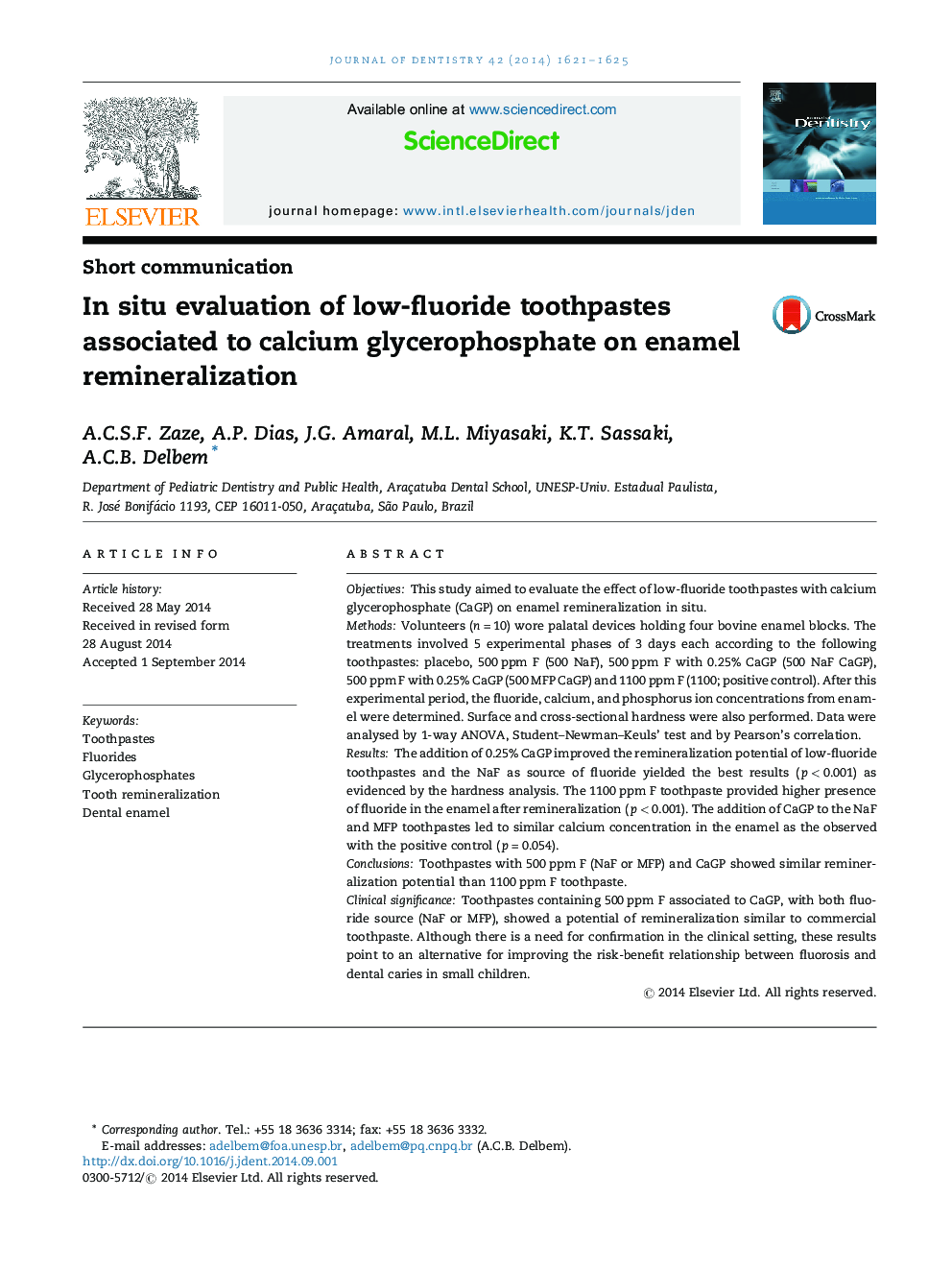| Article ID | Journal | Published Year | Pages | File Type |
|---|---|---|---|---|
| 6053498 | Journal of Dentistry | 2014 | 5 Pages |
ObjectivesThis study aimed to evaluate the effect of low-fluoride toothpastes with calcium glycerophosphate (CaGP) on enamel remineralization in situ.MethodsVolunteers (n = 10) wore palatal devices holding four bovine enamel blocks. The treatments involved 5 experimental phases of 3 days each according to the following toothpastes: placebo, 500 ppm F (500 NaF), 500 ppm F with 0.25% CaGP (500 NaF CaGP), 500 ppm F with 0.25% CaGP (500 MFP CaGP) and 1100 ppm F (1100; positive control). After this experimental period, the fluoride, calcium, and phosphorus ion concentrations from enamel were determined. Surface and cross-sectional hardness were also performed. Data were analysed by 1-way ANOVA, Student-Newman-Keuls' test and by Pearson's correlation.ResultsThe addition of 0.25% CaGP improved the remineralization potential of low-fluoride toothpastes and the NaF as source of fluoride yielded the best results (p < 0.001) as evidenced by the hardness analysis. The 1100 ppm F toothpaste provided higher presence of fluoride in the enamel after remineralization (p < 0.001). The addition of CaGP to the NaF and MFP toothpastes led to similar calcium concentration in the enamel as the observed with the positive control (p = 0.054).ConclusionsToothpastes with 500 ppm F (NaF or MFP) and CaGP showed similar remineralization potential than 1100 ppm F toothpaste.Clinical significanceToothpastes containing 500 ppm F associated to CaGP, with both fluoride source (NaF or MFP), showed a potential of remineralization similar to commercial toothpaste. Although there is a need for confirmation in the clinical setting, these results point to an alternative for improving the risk-benefit relationship between fluorosis and dental caries in small children.
